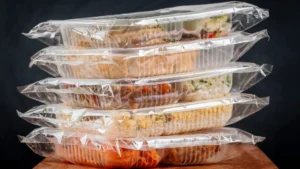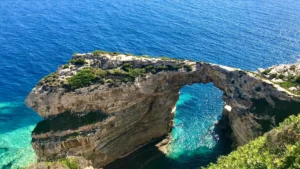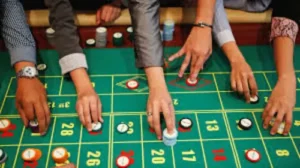Southeast Asia is a place of vibrant ethnic and religious diversity. The northern region is predominantly Buddhist but ancient spiritual beliefs also play a major role in many people’s lives.
In Vietnam, the most important festival is Tet (short for Tet Nguyen Dan, meaning ‘the first day’) which occurs in late January/early February at the same time as Chinese New Year. Officially, Tet celebrations last a week but in practice the festivities continue much longer. Before the New Year begins, crowds throng in the streets setting off firecrackers to repel the evil spirit Na A, who is frightened away by noise and bright lights.
Traditionally, each family displays cây nêu, an artificial New Year tree consisting of a bamboo pole 5 to 6 meters long. The top end is usually decorated with many objects, including good luck charms and origami fish. Homes are also decorated with bonsai and flowering plants such as chrysanthemum, marigold and lavender. Tet is about forgiveness, canceling debts and putting last years’ problems behind you. Hundreds of people gather in prayer at Buddhist pagodas, and it’s a great time to observe the Buddhist and Confucian rituals that are an integral part of Vietnamese life.
The ‘new year’ is celebrated in mid-April in Thailand, Cambodia, Laos and Myanmar but the name and celebrations differ from country to country. Known as Songkran in Thailand, Pimai in Laos, Chaul Chnam Thmey (or simply Cambodian New Year) in Cambodia and Thingyan in Myanmar, the common elements are three day of festivities and water. Water is thrown on everyone in Thailand, Laos and Myanmar while in Cambodia it is more restrained with people washing themselves, their parents and grandparents as well as statues of Buddha.
The throwing of water originated as a way to pay respect, by capturing the water after it had been poured over Buddha statues and then using this “blessed” water to give good fortune to elders by gently pouring it on the shoulder. In modern-times it has become an all-out water fight, with buckets and spray guns being used to soak everyone in sight. Colored powder is a popular addition in Thailand with perfumed water common in Laos and Myanmar. Tourists are not spared a drenching but it’s the hottest time of year and everyone is in good spirits.
Another fun event is the two-day Laotian festival of Boun Bang Fai (rocket festival) which has its origins in pre-Buddhist rain-invoking ceremonies. Large bamboo rockets are built and decorated by monks and carried in procession before being blasted into the sky to invite rain. A rocket builder gets more praise the higher a rocket goes, while designers of failed rockets are thrown in the mud. The festival is accompanied by parades, singing, dancing and general merry-making.
In Cambodia, Prachum Benda, (colloquially called Pchum Ben) is a 15-day observance in mid-September to commemorate ancestors’ spirits. For fourteen days, special food is prepared for ancestral spirits to enjoy. Before noon, candles and incense are lit and a prepared list of names is recited and burned by monks to alert and direct wandering souls to the location of their families. The fourteen day lead-up to Pchum Ben is a time of remembrance and an opportunity to accumulate good karma on behalf of one’s ancestors. Pchum Ben, the fifteenth and final day, involves large gatherings and festivities at the local Buddhist temple and communal feasts.
Loy Krathong is a beautiful Thai tradition occurring in November on the night of a full moon. Sins of the past year are symbolically dispatched on small rafts called ‘krathongs’ that are floated down rivers or canals. Traditionally made from banana tree bark (modern-day versions use styrofoam), krathongs are decorated with elaborately-folded banana leaves, flowers, candles and incense. Releasing the krathongs on water gives thanks to water goddess Phra Mae Khongkha, and the festival is usually accompanied by fireworks and sending ‘khoms’ (glowing rice paper balloons) into the night sky.
A far less beautiful but no less intriguing Thai celebration is the Phuket Vegetarian Festival, which occurs in late September/early October. The festival originated when a troupe of Chinese performers visiting Phuket fell ill, gave up meat for seven days and performed a number of rituals to purify themselves and appease the gods. During the Festival the Buddhist population wears white and abstains from meat, alcohol and sex, while street markets serve unique vegetarian delicacies.
Some participants enter shrines and meditate until they enter an ecstatic trance and perform fairly gruesome acts of self-mutilation. Spectacles include bladed ladder climbing, fire walking and the must-be-seen-to-believed processions that involve entranced celebrants piercing their faces with anything sharp that’s lying around including knives, hooks and even furniture. There’s also self-flagellation with axes and swords. Evil spirits are scared away with thousands of firecrackers (if they haven’t already been frightened off by the pierced faces).







